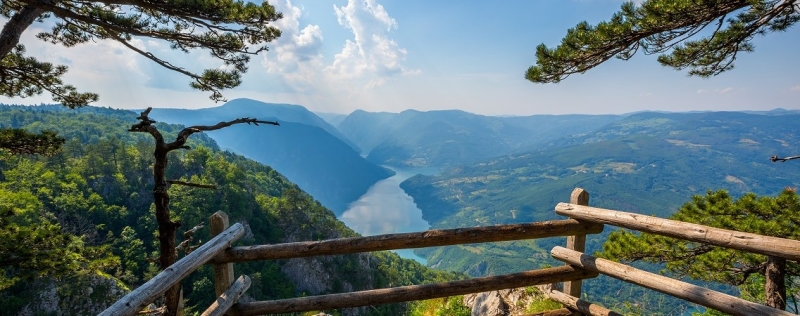
Serbia does not have a sea, but there are mountains and national parks, a mild climate and ancient health resorts. And also the fabulous village of Kusturica, breathtaking postcard views, ancient fortresses and hearty Serbian cuisine. We tell you what a trip through this Balkan country can be like.
How to get there
There are direct Air Serbia flights from Moscow to Belgrade from 38,000 rubles*, travel time 3 hours. Russians can stay in the country without a visa for up to 30 days; they only need a foreign passport. All Covid restrictions have been lifted, providing a vaccination certificate and PCR tests is no longer required.
There are no domestic flights in the country; you can travel between cities by trains or buses. There are trolleybuses and trams in Belgrade; using public transport in the capital is cheaper with the Bus Plus pass. The cost of the card itself is 250 dinars (about 120 rubles), one trip is 89 dinars (about 42 rubles). You can top up your travel card at kiosks at bus stops.
To get to some natural attractions, it’s worth renting a car – from 520 rubles* per day.
In Serbia, Russian Mir, Visa and Mastercard cards do not work, so it is better to take cash, foreign bank cards or use money transfers. Rubles are not exchanged everywhere, so it is better to travel with dollars or euros.
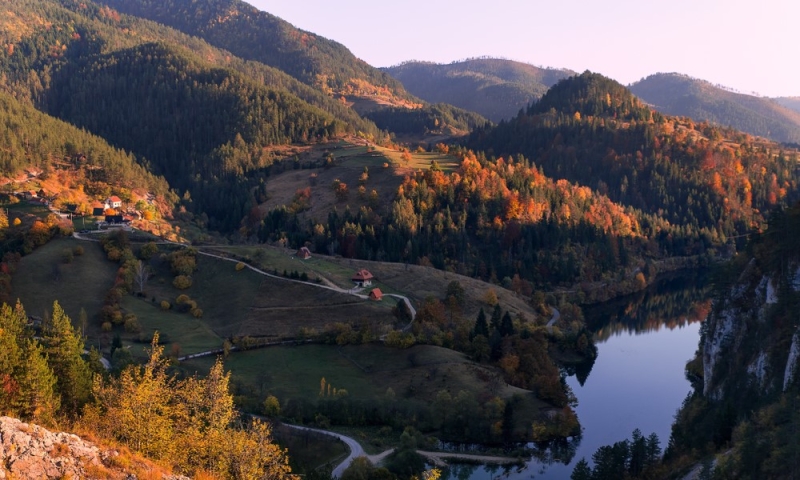
Where to stay
Start your trip from Belgrade. The Serbian capital has a large selection of hotels to stay in. It’s also easier to get to the main attractions from here.
We have selected hotels in Belgrade with good guest ratings for every taste and budget:
San Art Floating Hostel & Apartments is an unusual budget hotel in a quiet, picturesque location on the river. At the same time, the inside is cozy and spacious. A double room with breakfast costs 2,400 rubles* per night, a four-bed room costs 4,300 rubles*.
MARK Hotel is a small hotel next to the Nikola Tesla Museum. A room with a king-size bed and breakfast will cost 6,800 rubles* per night.
Hotel Passpartù Home Garni is an apartment hotel with a spa in the Old Town near Republic Square. For a night in an apartment with a large double bed and breakfast, pay 8,000 rubles*.
Mama Shelter Belgrade is a hotel overlooking Kalemegdan Park, where each room is a work of art. On site there is a large outdoor terrace with a bar and restaurant, as well as a gym and massage room. A standard room with a city view without breakfast costs 9,300 rubles* per night.
Fall in love with the capital
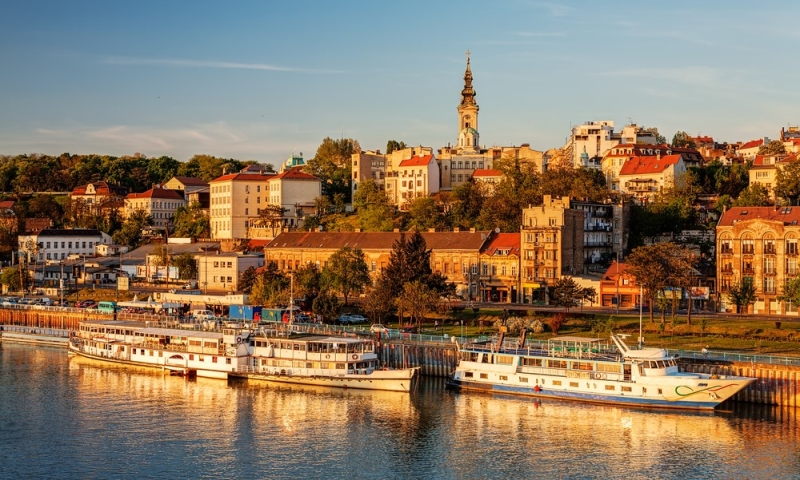
From partying in floating nightclubs to strolling through the ruins of a Roman fortress, there is plenty to do in the capital at any time of the day. It is better to allocate two to three days to visit the city.
Start your acquaintance with the city from the Kalemegdan fortress, which stands at the confluence of the Danube and Sava rivers. Then you can walk along Knja Mihajlova Street – this is the main pedestrian area of Belgrade with shops and restaurants. Check out the Nikola Tesla Museum, the Zepter Museum of Serbian Art, and the Hotel Moskva, Belgrade’s oldest hotel. Then have lunch at the old Kafana Znak Pita, a traditional Serbian restaurant built in 1823.
At sunset, look at the city from the water: an hour and a half boat ride along the Danube and Sava costs 2,000 dinars (about 1,050 rubles). In the evening it’s nice to stroll along the promenade, where there are more than 200 bars, clubs and restaurants open until dawn.
Taste Serbian cuisine
Serbian cuisine is simple and hearty, mixing Eastern, Central European and Balkan culinary traditions. The central place here is occupied by meat: fried, dried, grilled, stewed or baked. It is eaten for breakfast, lunch and dinner. There are even special establishments – bakeries, where they serve only meat dishes. You can taste local cuisine in Belgrade in the restaurants Gradska, Kafana Znak Pitanja and Orasac.
It’s worth trying sama (stuffed cabbage rolls made from minced meat), čvartsi (fried pork lard), čevapčiči (fried sausages), vešalica (chops with spices) and pljeskavica (flat cutlet). Be careful if you order cookies – in Serbia it’s a pig on a spit. We recommend drinking it with fermented milk kajmak, blackberry wine or Serbian moonshine – rakia.
Don’t limit your trip to Serbia to just Belgrade. Explore small towns, monasteries and national parks. Here are the perfect places to travel around the country – by car, bus or train.
Hear the legends of the “Devil City”
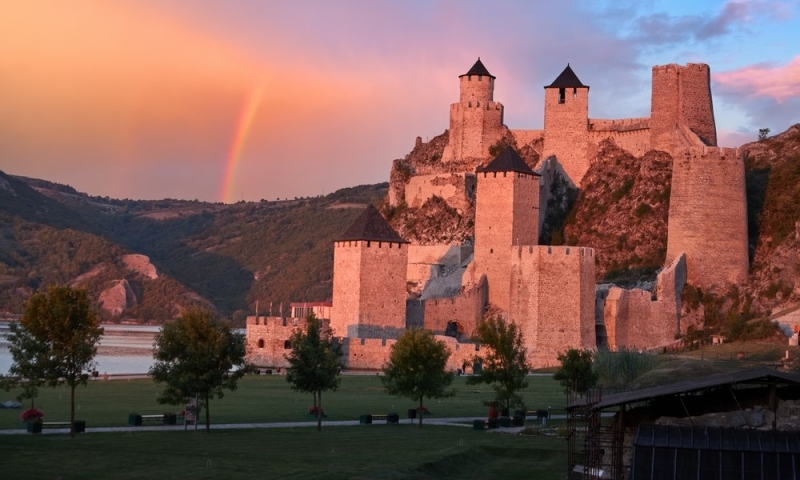
The most mysterious place in Serbia is located near the town of Kuršumlija on the slopes of Mount Radan. These are natural earthen formations with black boulders on top that resemble people turned to stone. The place is so mystical that it is covered in legends and fairy tales. In addition to the rocks themselves, in the Javolya-Varosh park there are ancient mines, strange wooden sculptures and a “dead stream”, on the banks of which nothing grows.
The attraction can only be reached by car. Public transport does not go here. The entrance ticket costs 350 dinars (approximately 185 rubles).
Visit the Golubac Fortress
The medieval fortress is located a couple of hours by car from the capital and is the hallmark of Serbia. Built on rocks on the banks of the Danube, it consists of several complexes with towers and bridges. The fortress offers a breathtaking view of the “Iron Gate” – the place at the entrance to the Djerdap Gorge, where the Danube narrows from 6 km to 162 meters.
A bus runs from Belgrade to Golubac from the central bus station. A round-trip ticket costs 1880 dinars. From Golubac you can walk to the attraction or take a taxi. Entrance to the fortress territory is paid and depends on the chosen route: there are four of them, of different levels of difficulty, the price is 600–1500 dinars (300–800 rubles).
Go on a cruise along the Danube
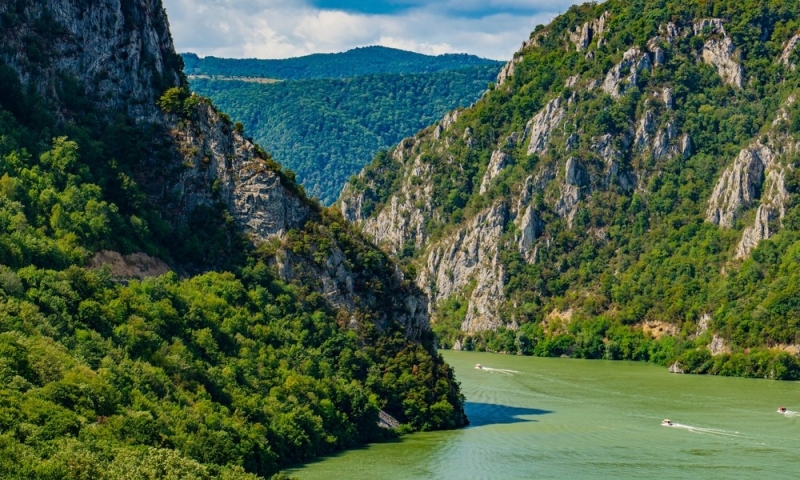
You can admire the beauty of the Golubac Fortress during a cruise along the Danube. The route starts in Belgrade and runs through the Djerdap Gorge to the town of Kladovo. This is one of the most picturesque places on the Danube: one bank of the river is still Serbia, and the other is Romania. The cost of a four-day cruise starts from 400 euros.
Make a pilgrimage
There are more than two hundred churches and monasteries in Serbia, most of which are recognized as cultural heritage sites. Each has its own peculiarity: in the Mileševa monastery there is a fresco of the White Angel, in Ravanica – the relics of Prince Lazar, in Žić Serbian rulers were crowned, and impressive defensive fortifications were built around the Manasija monastery.
If you only have time for one place, visit Studenica, the largest Orthodox monastery in the country. It is located in a picturesque valley surrounded by mountains. There is an authentic refectory on site with an oven, stone tables and wooden benches. You can get there by bus from Belgrade to Ušce or with a guided tour. Entrance to the monastery territory is free.
Get to Drvengrad
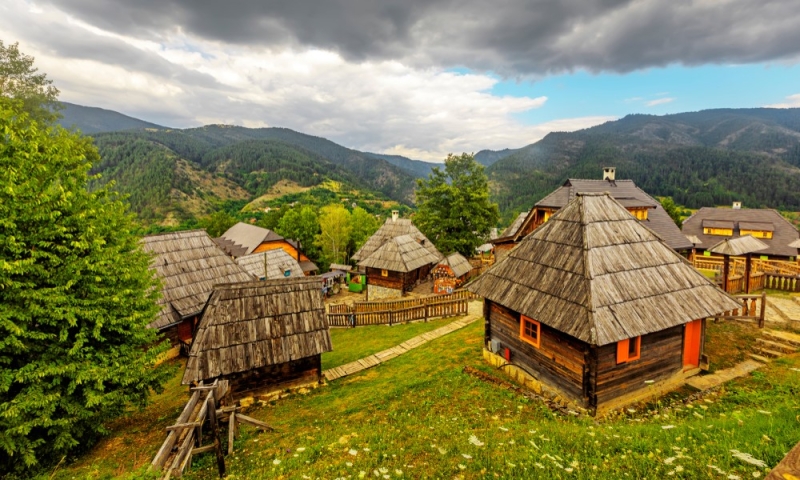
The ethno-village Mečavnik, or Drvengrad, in the Mokra Gora National Park was built by director Emir Kusturica for the set of the film “Life is a Miracle.” And although the entire village is a large four-star hotel complex with restaurants, shops, an underground cinema and souvenir shops, a trip here will introduce you to the real life and way of life of the Serbian hinterland. Near the village, the ancient Šagranska osmitsa railway was restored, which in the summer carries tourists along a circular route through the picturesque surroundings.
You don’t have to stop here to visit the village. You can come for the day or combine it with a visit to Tara National Park. Entrance ticket costs 100 dinars.
The easiest way to get to Drvengrad is by car or with a tour. If you use public transport, you first need to take a bus from Belgrade to Užice, and then transfer to a minibus to Mokra Gora. The journey will cost 1000 dinars (520 rubles).
Spend a day in the forest
Tara National Park is the most forested part of Serbia. It’s worth a visit for three reasons. Firstly, these are the viewpoints of Banska Stena and Kozja Skala, which offer panoramic views of the Drina River canyon. Secondly, these are dense coniferous forests: only here the luxurious Serbian spruce grows. Thirdly, there are almost three hundred kilometers of hiking trails, four cycling routes and asphalt roads for cars. A detailed map with parking areas can be obtained from the tourist centers in the park, where they also rent bicycles.
There are also several lakes in Tara, where people swim and fish in the summer. And since most of the park consists of forest, there is a rich fauna. The main character, for whom special tours are even taken here, is a brown bear. To observe them, special feeding areas have been set up in the park.
It’s better to come to Tara for a few days in your own car. Or combine a visit to the park with a trip to Drvengrad. You can spend the night in campsites or in guest houses in the villages of Bajina Basta and Mitrovac. There are also cafes and shops there. The entrance ticket to the park costs 300 dinars.
Get healthy
Serbia is not the most obvious country for spa tourism. Nevertheless, there are more than a thousand geothermal and mineral springs and about 40 sanatorium and treatment areas. The most popular are Vrnjacka Banja, Sokobanja and Zlatibor. The latter is also a ski resort.
Health resorts are an ideal option to end a busy trip to Serbia with constant transfers. We advise you to set aside a couple of days to undergo a full-fledged treatment program or simply relax at the thermal springs. In addition, most cities are located in the mountains and picturesque valleys, so you can alternate spa treatments with walks in the surrounding area.
*Prices are current at the time of publication

